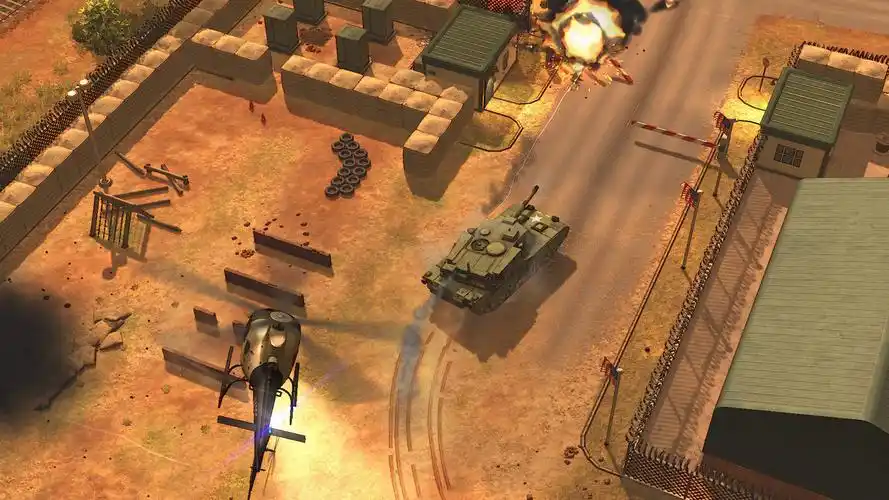Title: The Grim Reaper's Blueprint: Inside the "Death Epidemic Shelter Sign Installer Simulator VR" Mount Missions Expansion
The virtual reality landscape is often a canvas for the fantastical: wielding lightsabers, exploring alien worlds, or building empires. But a new, unsettlingly niche genre has emerged from the shadows, one that trades power fantasies for the grim, methodical dignity of essential labor in a world undone. The original Death Epidemic Shelter Sign Installer Simulator VR carved out this unique space, offering a hauntingly meditative experience. Now, its expansion, Mount Missions, ascends to terrifying new heights, literally and philosophically, transforming a simple job into a profound commentary on hope, futility, and the human compulsion to leave a mark.
The Ashen World and Its Quiet Protocol
For the uninitiated, the base game’s premise is stark. A relentless, unnamed pathogen has decimated the global population. Society hasn’t collapsed into zombie-fueled anarchy; instead, it has faded into a silent, ashen quiet. You are not a hero, a soldier, or a scientist searching for a cure. You are a Sign Installer, a contractor for the nebulous "Continuity Directorate." Your task is simple: traverse the abandoned, windswept streets of suburban and urban environments and affix standardized, reflective green-and-white signs pointing towards the nearest designated quarantine shelter. It’s a job born of a desperate, last-ditch protocol: if anyone emerges, confused and terrified, they might see a sign and find safety. It’s the bureaucratic response to the apocalypse, and its heartbreaking banality is the game’s greatest strength.
The core gameplay loop is a masterclass in VR immersion. You physically handle your tools—a heavy bag of signs, a clattering rivet gun, a drill, a laminated instruction manual. You feel the rumble of the empty streets through your controllers. The only sounds are the whisper of the wind, the scuttling of a stray newspaper, and the stark, mechanical clunk-thwip of installing another marker on a brick wall or a lamppost. It’s repetitive, lonely, and deeply atmospheric. You are a ghost, building a trail of breadcrumbs for other ghosts who may or may not exist.
The Expansion: A Vertical Descent
The Mount Missions expansion completely recontextualizes this experience. It doesn’t add new tools or enemies; it changes the terrain. The Directorate, in its infinite, detached logic, has identified a critical flaw in the initial urban sign plan: visibility. Low-hanging smoke from uncontrolled fires, the dense canopy of a rewilding city, or simply the need to cast a wider net of guidance necessitates installation in high-altitude locations.

Your new assignments are on mountaintops, radio towers, skyscrapers half-claimed by rust, and the skeletal girders of suspended bridges swaying in a gale. The mission is the same, but the environment is a brutal and unforgiving antagonist.
The Agony and Ecstasy of Height
This is where the VR medium transcends gimmickry and becomes a crucible for emotion. Where the base game was melancholic, Mount Missions is pure, uncut dread. Looking down from the rusted maintenance ladder of a 100-story building, your stomach lurches with genuine vertigo. The haptic feedback in the controllers mimics the strain in your arms as you pull yourself up. A sudden gust of wind doesn’t just rustle leaves; it makes the entire structure groan, and you instinctively crouch down, your virtual hands gripping a beam for dear life.
The act of installation itself becomes a high-stakes puzzle. On a stable street, you could rivet a sign mindlessly. Here, on a narrow steel beam hundreds of feet in the air, you must secure your safety harness (a new and vital piece of equipment), plan your movements carefully, and execute the installation with precision. Fumbling your drill now doesn’t just mean a awkward animation; it means watching it tumble end-over-end into the abyss below, a tiny metallic glint swallowed by the fog. The silence is no longer just lonely; it is pressurized, heavy with the risk of a single, fatal mistake.
A Monument to Maybe
This heightened tension elevates the game’s core themes. Every sign installed in the expansion feels less like a bureaucratic mandate and more like a monumental act of defiance. You are not just putting up directions; you are building a beacon. The effort is Herculean, the personal risk is immense, and the potential payoff is infinitesimally small. The question shifts from "Will anyone see this?" to "Is this act of insane courage, performed for a hypothetical survivor, the most human thing left to do?"
The signs themselves, viewed from these majestic, terrifying vantage points, become ironic landmarks. They point towards shelters that are likely just as empty as the streets. They are a testament to a system that planned for everything except its own irrelevance. And yet, the act of placing them is undeniably meaningful. In a dead world, you are engaging in an ultimate act of communication, of care for an other you will never meet. It’s a performance art piece on the nature of hope itself—not as a warm feeling, but as a difficult, dangerous, and deliberate action taken in the face of overwhelming absurdity.
Death Epidemic Shelter Sign Installer Simulator VR: Mount Missions is not for everyone. It is slow, punishing, and emotionally draining. It offers no rewards, no level-ups, and no narrative closure. But for those willing to strap on its harness and face the void, it offers something rare: a profound, visceral, and unforgettable meditation on what it means to be a caretaker of a future that may never come. It is the ultimate simulator not of a job, but of a purpose, found in the most unlikely and terrifying of places.
Tags: #VRGaming #SimulatorGames #IndieGames #DeathEpidemic #VRExperience #GamingPhilosophy #ApocalypticGames #MeditativeGames #HorrorGames #Immersion


















